Whilst the temptation to retreat indoors with a steaming cuppa and hibernate until the frost thaws might be overwhelming, winter actually presents the perfect opportunity to get your garden ready for spring’s grand awakening. As the garden lies dormant under its blanket of frost, savvy gardeners across the UK are already plotting and planning for the seasonal spectacular that awaits.
With shorter days and chilly temperatures, it might seem counterintuitive to venture out into your garden, but these quiet months are crucial for setting the stage for a stunning spring display. Here’s everything you need to know about preparing your garden during the winter months.
Soil Preparation: The Foundation Of Success
The secret to a thriving spring garden lies beneath the surface, in the rich, dark earth that sustains all plant life. Winter presents a unique opportunity to improve your soil quality when beds are largely empty and the ground is more workable after rain. This is the time when nature’s own freeze-thaw cycles help break down soil structure, making it the perfect season for adding amendments and preparing for the growing season ahead.
Start by removing any lingering weeds – yes, these persistent fellows can survive even in winter – and add a generous layer of organic matter such as:
- Well-rotted manure
- Garden compost
- Leaf mould (those autumn leaves you cleverly collected)
- Green waste compost
Leave this to break down over winter, allowing worms to work their magic and incorporate it into the soil. The freeze-thaw cycles will help break down heavy clay soils, making them more workable come spring.
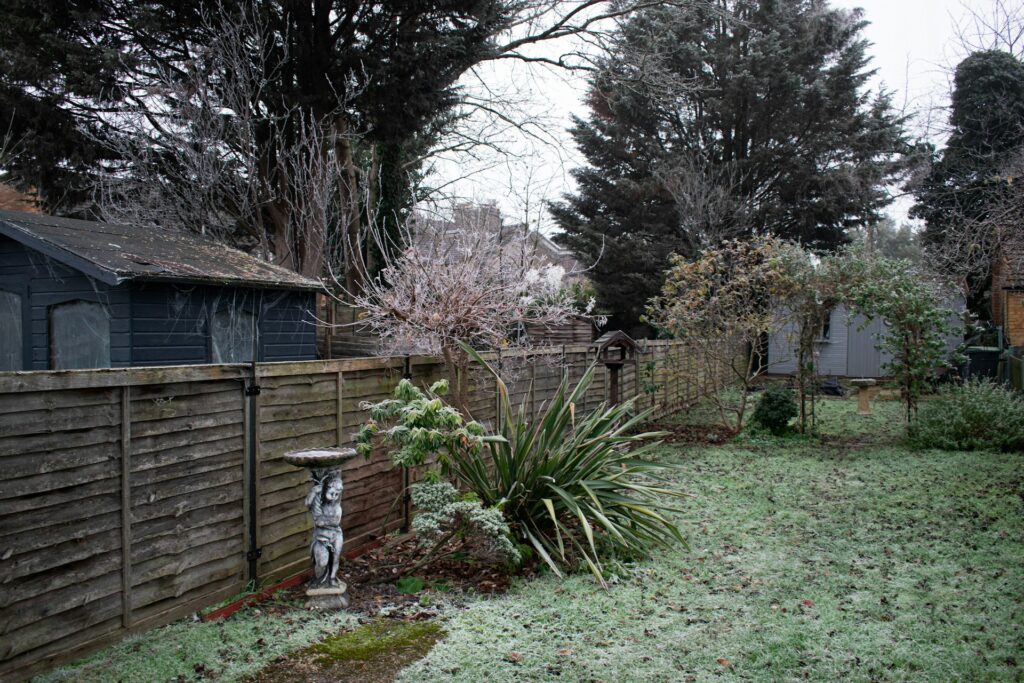
Structure & Infrastructure
When the leaves have fallen and the perennials have died back, your garden’s structural elements take centre stage. This stripped-back vista offers an invaluable opportunity to assess the bones of your garden and address any issues that might have been masked by summer’s abundance. Think of it as giving your garden’s framework its annual MOT – catching any problems now will save you headaches when the growing season kicks into high gear.
Winter reveals the bones of your garden, making it the perfect time to assess and upgrade your garden’s infrastructure. Take a good look at your:
- Fencing (check for loose panels or posts that might not survive a spring storm)
- Greenhouse glass (give it a thorough clean to maximise light levels)
- Plant supports and trellises (repair or replace as needed)
- Paths and stepping stones (address any wobbling or sinking before they become hazards)
Tool Time
Your garden tools are the unsung heroes of your horticultural success, and winter provides the perfect opportunity to give them the attention they deserve. Just as a chef maintains their knives, a gardener should maintain their tools – sharp, clean, well-oiled implements make for easier and more enjoyable gardening when spring arrives.
Those trusty garden tools that have served you faithfully through the seasons deserve some TLC. Give them a thorough clean, sharpen any blades, and apply oil to prevent rust. There’s nothing worse than reaching for your secateurs come spring only to find them seized up with rust.
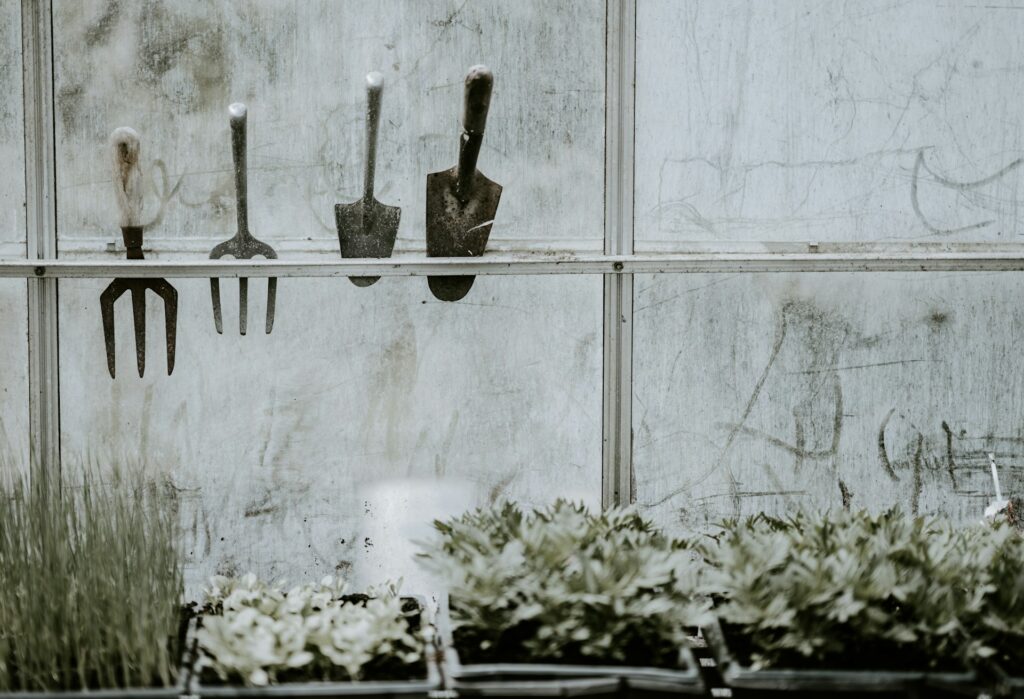

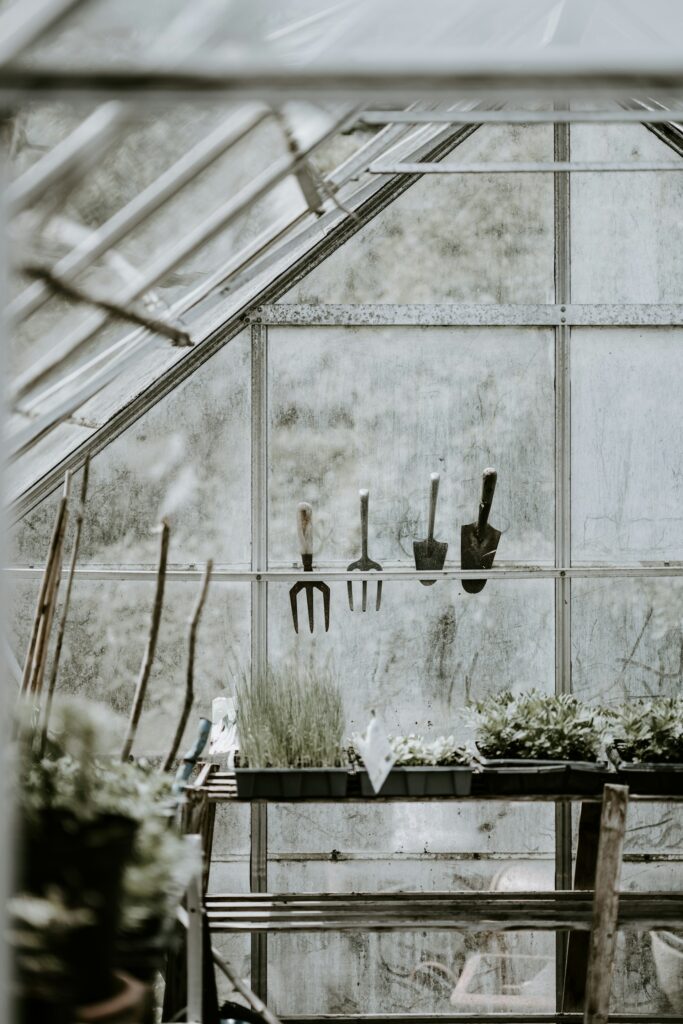
Hedge Management
When it comes to garden boundaries, few features rival the timeless appeal and ecological benefits of a well-maintained hedge. These living walls don’t simply down tools for winter – in fact, the dormant season presents the perfect opportunity to give them the attention they need to thrive come spring. Whether you’re blessed with a statuesque yew hedge or a wildlife-friendly mixed native hedge, winter maintenance will ensure your verdant boundaries remain both beautiful and functional.
As the experts at Heijnen Plants so sagely intone, you should start by assessing your hedge’s overall health and structure. In particular, they tell us to look out for:
- Gaps that need filling (winter is ideal for bare-root planting)
- Dead or diseased sections requiring removal
- Areas where the base has become sparse
- Signs of pest problems like box moth or leaf miners
For deciduous hedges, winter is your window of opportunity for hard pruning to rejuvenate overgrown specimens and correct any structural issues. Evergreen hedges need a gentler approach – avoid hard pruning in winter as this can leave them vulnerable to frost damage, but you can still remove damaged growth and lightly trim to maintain shape.
Don’t forget to clear fallen leaves and debris from the base of hedges regularly – this prevents fungal problems and provides a cleaner start for spring growth.

Planning & Plotting
The dark winter evenings might keep us indoors, but they provide the perfect opportunity for some armchair gardening. This is when dreams can be sketched into plans, when seed catalogues become dog-eared with possibility, and when next year’s garden begins to take shape in your imagination. Armed with a notebook, a cup of tea, and perhaps a biscuit or two, you can create your perfect garden on paper before lifting a single trowel.
Winter evenings are perfect for plotting next year’s garden success. Get cosy with some gardening catalogues and start planning:
- Which vegetables you’ll grow and where (crop rotation is crucial)
- New plants you’d like to introduce
- Colour schemes for borders
- Projects you’d like to tackle
Remember to order seeds early – the most popular varieties often sell out quickly once spring arrives.


Winter Pruning
Whilst your garden might appear to be sleeping through the winter months, this dormant period provides the perfect window for some strategic seasonal pruning. With leaves shed and branches bare, you can clearly see a plant’s structure and make informed decisions about its shape. Plus, pruning during dormancy reduces the risk of disease and gives plants plenty of time to heal before the growing season begins.
Many plants benefit from a good winter haircut. This is the time to tackle:
- Apple and pear trees (when dormant)
- Grape vines
- Wisteria
- Rose bushes
- Deciduous hedges
Just be sure to pick a dry day when frost isn’t forecast, as pruning in wet conditions can encourage disease.
Protection Measures
As temperatures plummet and bitter winds sweep across the country, your garden’s more delicate residents need a helping hand to survive until spring. Think of winter protection as creating tiny microclimates throughout your garden – each vulnerable plant getting its own cosy winter coat or sheltered spot to weather the worst of the British winter.
Your garden isn’t completely inactive in winter, and some plants need a bit of protection to see them through to spring:
- Wrap tender plants in horticultural fleece
- Move vulnerable potted plants to sheltered spots or into greenhouses
- Check tree ties and stakes are secure
- Apply mulch around the base of plants for extra insulation
- Protect pond life by keeping a small area free from ice
Early Starters
Just when you think the garden is completely dormant, winter presents some exciting opportunities for getting ahead of the growing season. While fair-weather gardeners are waiting for spring, the savvy gardener knows that many plants actually benefit from an early start in the depths of winter. These hardy pioneers will reward your winter efforts with earlier blooms and harvests.
Believe it or not, winter is the perfect time to get a head start on some plants:
- Sweet peas can be sown in deep pots
- Broad beans can go directly into the ground
- Onion sets can be planted
- Hardy annuals can be started under cover
- Rhubarb can be forced for early stems
Wildlife Welcome
Don’t forget about your garden’s wildlife during the winter months. They’ll reward you come spring by helping with pest control and pollination. Consider:
- Keeping bird feeders topped up
- Providing fresh water (check for ice regularly)
- Creating log piles for insects
- Leaving some areas of garden ‘untidy’ for wildlife shelter
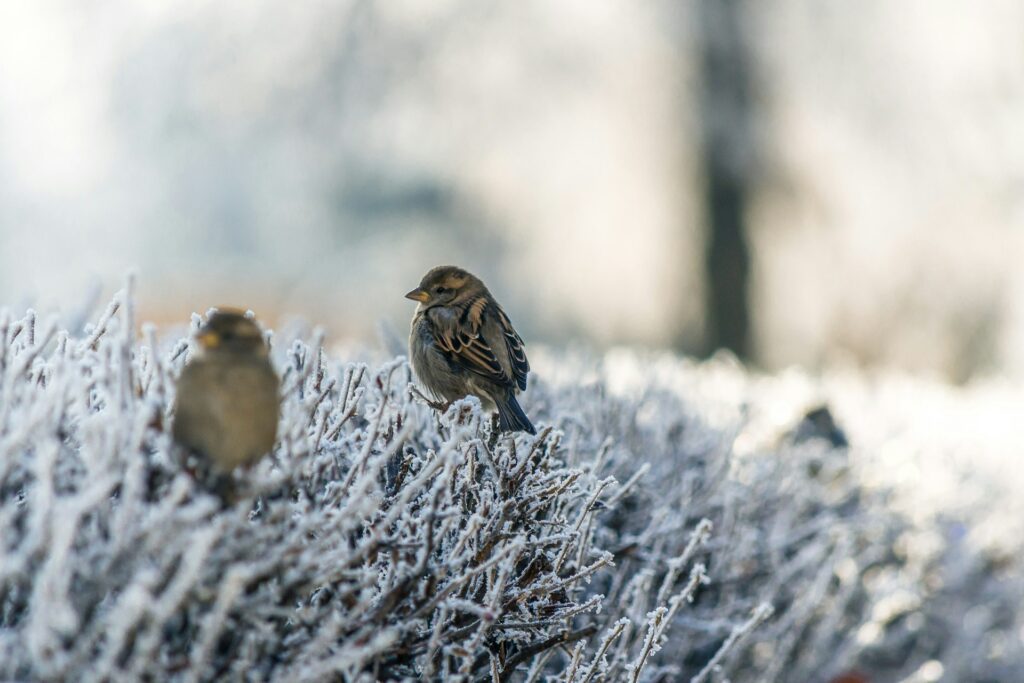
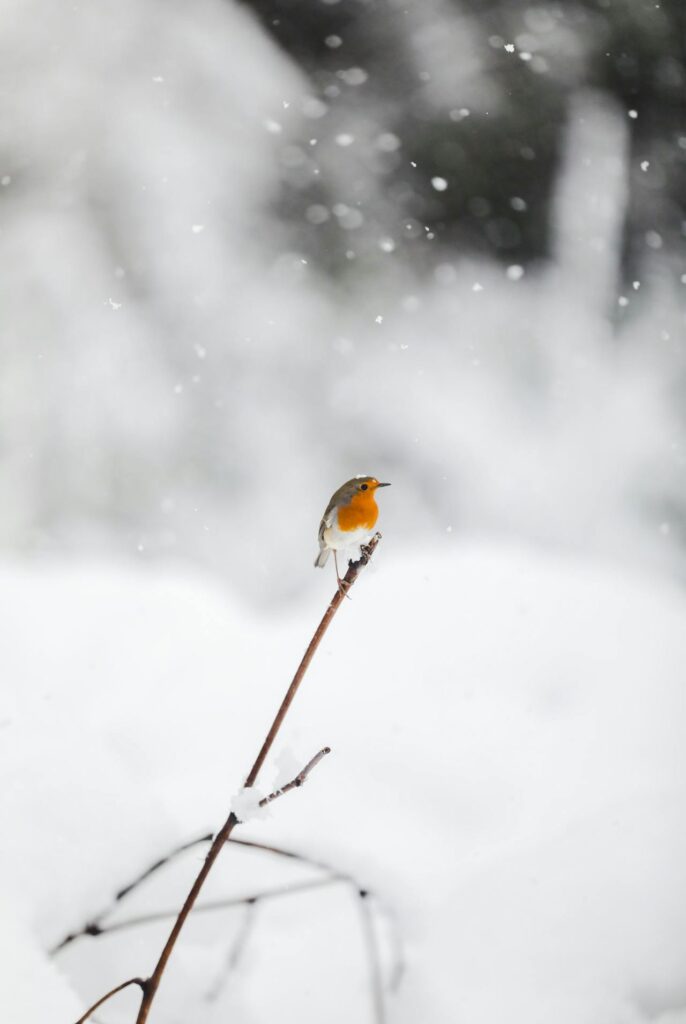
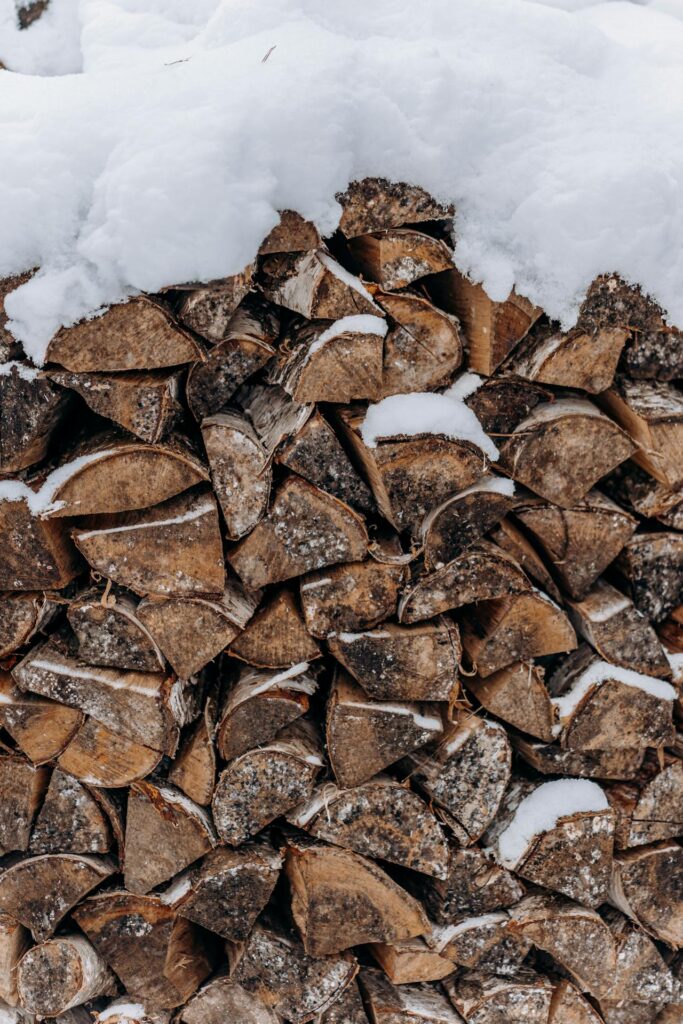
The Bottom Line
Winter gardening might not have the same immediate rewards as summer’s abundant harvests or spring’s colourful displays, but it’s these quiet months of preparation that lay the groundwork for a spectacular garden come spring. So, pop on your warmest jumper, grab those gardening gloves, and venture out into your winter garden – your future self will thank you when spring arrives in all its glory.
Remember, every hour spent in the garden during winter is an investment in spring’s success. Plus, there’s something rather magical about working in the winter garden, with its crisp air and peaceful atmosphere. And of course, that post-gardening cup of tea will taste all the better for having earned it in the winter chill.





